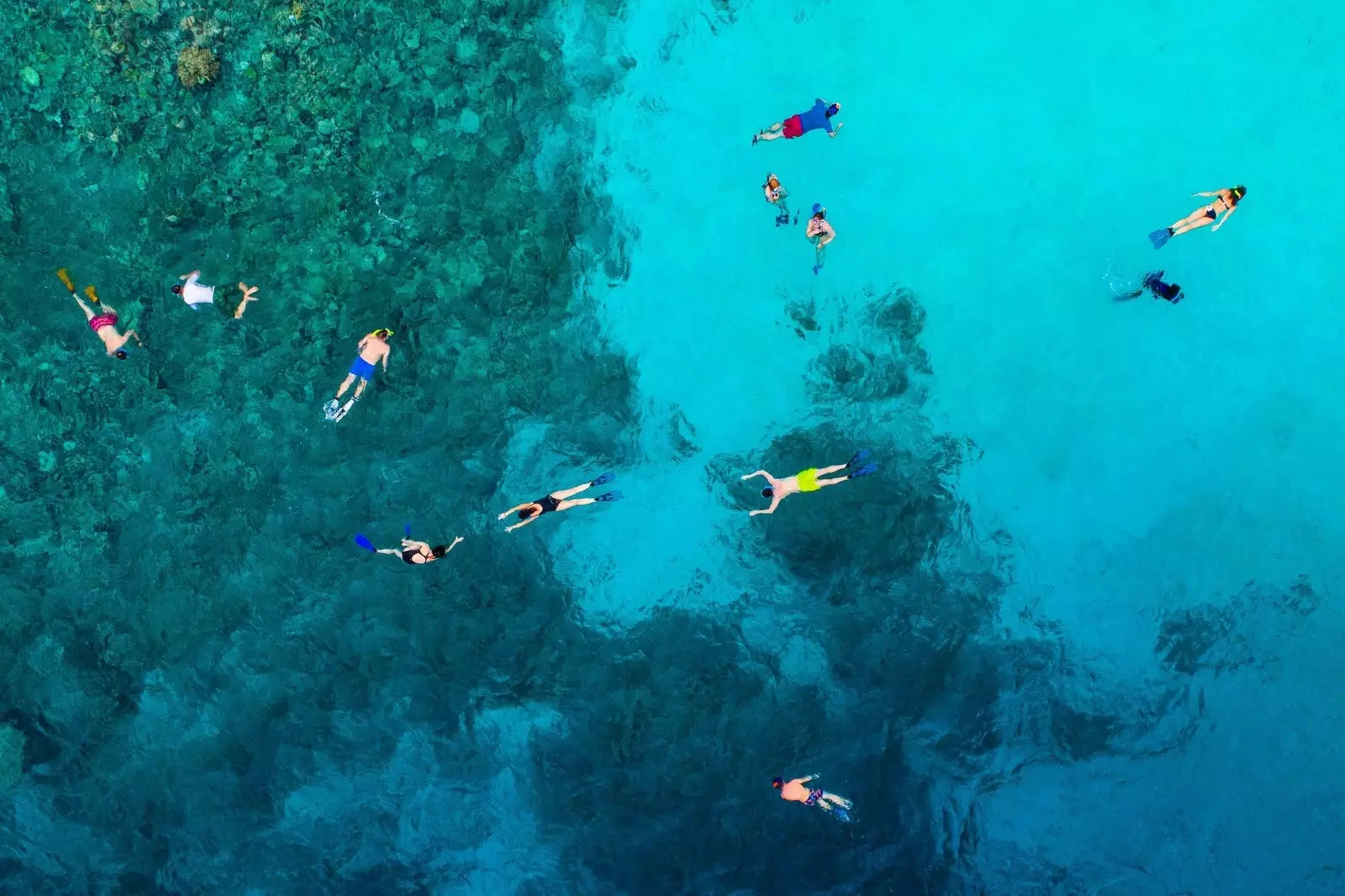
With goggles and a snorkel, the sea will never be the same.
Peninsular Spain and its islands are surrounded by seas and oceans that treasure a magnificent wealth of flora and fauna under its surface. Thus, several scientific studies consider that Our waters are home to the highest figures of biodiversity in the entire European and North African geographical area. Perhaps the creation of a dozen marine reserves, spread over the east and south of the peninsula, in addition to the Canary Islands.
Be that as it may, the fact is that there are many areas of the Spanish coast where a holiday will not be fully enjoyed if some diving goggles and a tube in the suitcase.
Although it is difficult to make a selection among so many marine jewels, these are some of the best places in Spain to snorkel and take an indelible memory.
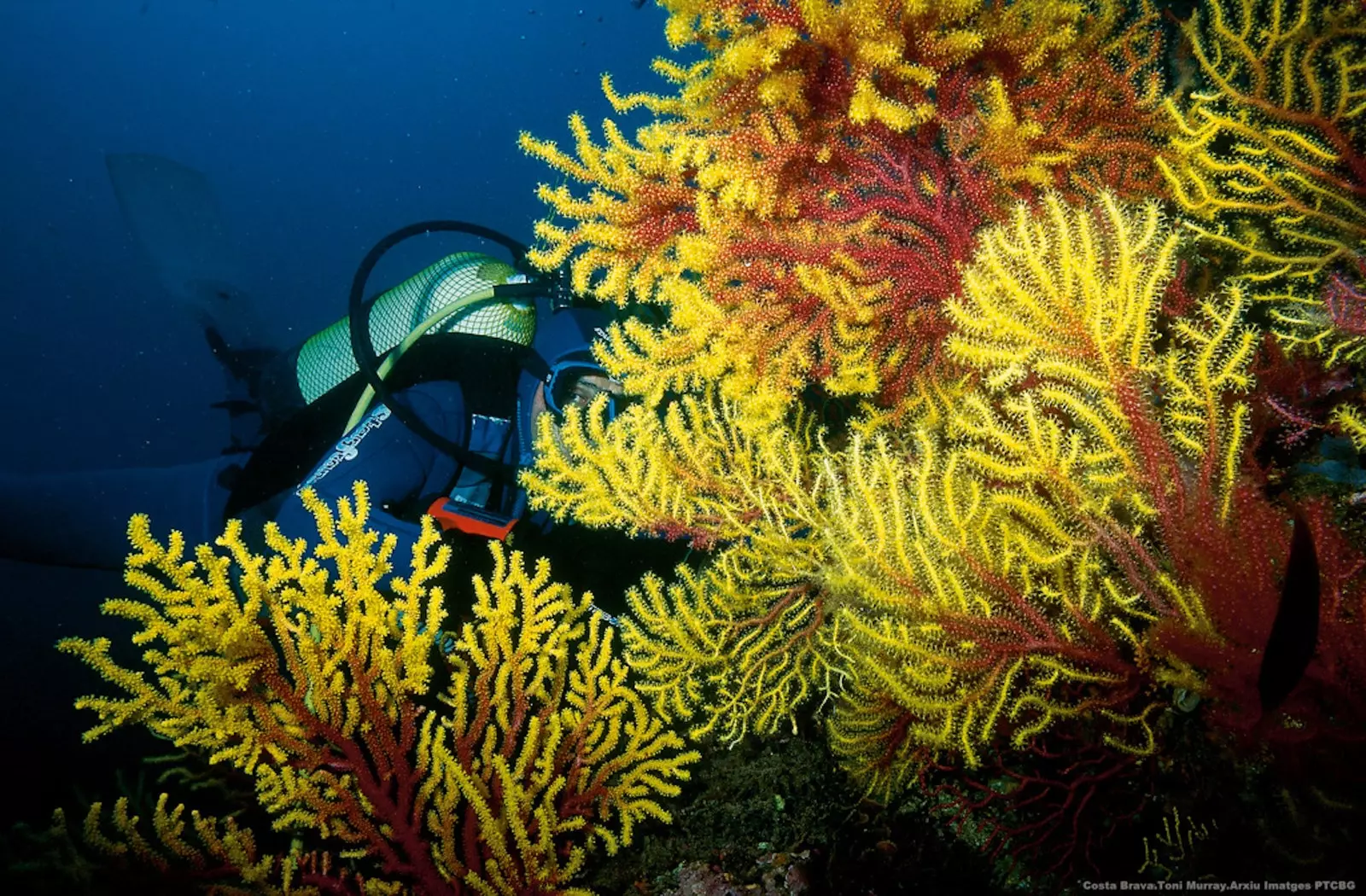
The Medes Islands are also one of the best places in the world for diving.
MEDES ISLANDS, COSTA BRAVA
The Medes Islands are an archipelago made up of seven small islands and located in front of the beaches of the Costa Brava. Being a protected place and having sources of fresh water -very rich in nutrients- that reach the sea, makes the Medes serve as a home for a great variety of marine plants and animals.
However, what makes Las Medas one of the best places in Spain for snorkeling is that it is one of the very few places in the Mediterranean where you can find coral reefs, giving a spectacular color –with yellow, red and green tones– to the underwater bottom. In addition to the common fish species of the Mediterranean, here you can find barracudas, groupers and tuna, and sometimes also sunfish and dolphins.
TABARCA ISLAND, ALICANTE
The waters that surround the small Alicante island of Tabarca, located off the coast of Santa Pola, have the honor of having been included in the first marine reserve declared in Spain (1986). Thanks to this, the Posidonia oceanica meadows -which are not algae, but marine plants- have renewed their splendor and now cover the sandy bottoms that surround the island. They live in them dozens of different fish species.
Besides, the rocky nature of Tabarca creates an ideal habitat for species such as octopuses, sea urchins, mosses and plants that develop better in such environments. Although the island has some very small dimensions –1.8 km long by 450 meters wide–, there are several interesting spots where you can practice snorkeling.
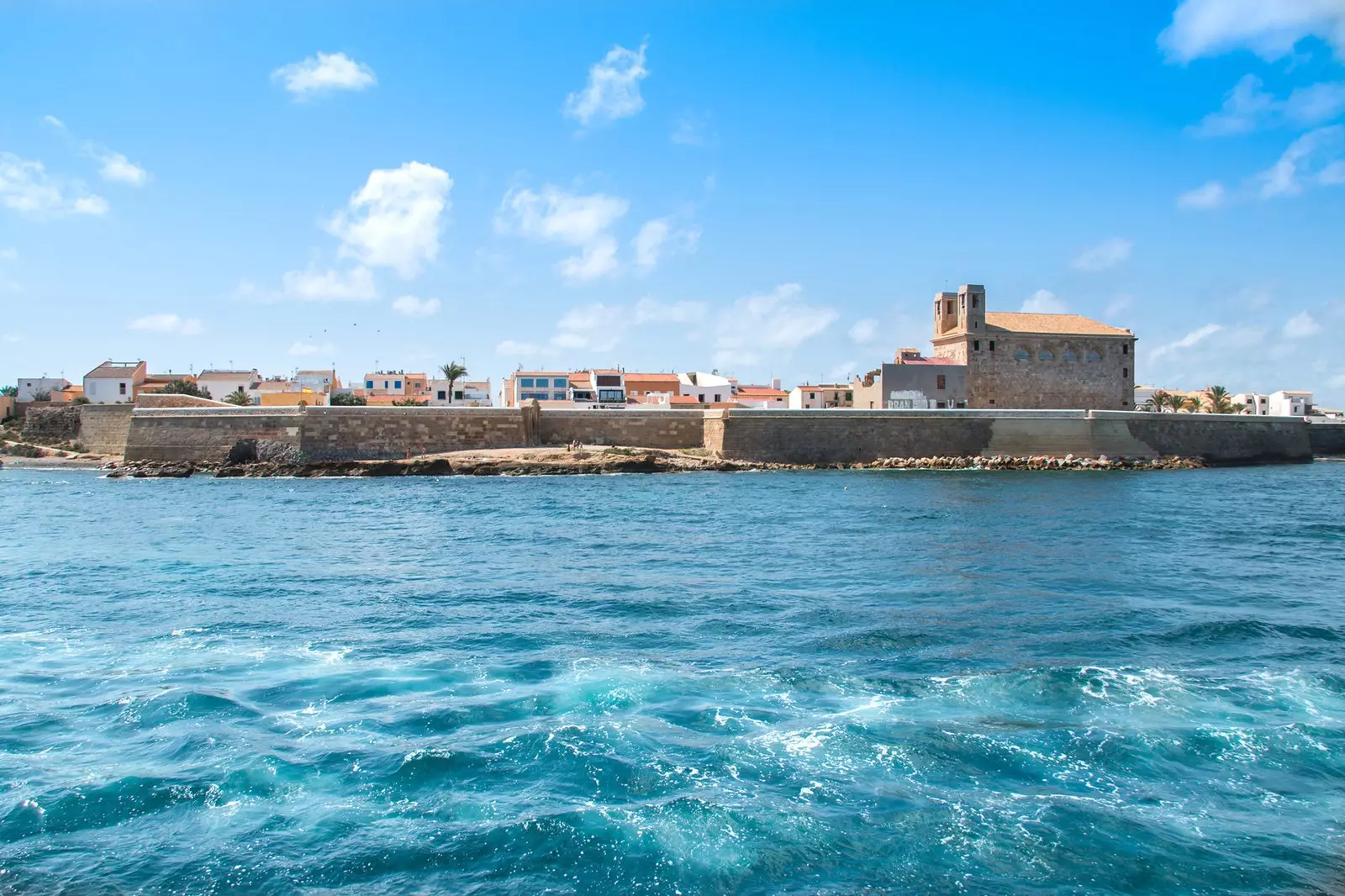
Tabarca creates an ideal habitat for species such as octopuses, sea urchins, mosses and plants
A very accessible area full of fish is the old north wall of Tabarca. It is located near the port, there are rocks and it is very shallow, being able to find schools of salps, sargos, some octopus and even some groups of small barracudas.
Those who like to dive inside caves will find their treasure in the Cala del Francés and the Cueva del Llop Marí. These are shallow flooded cavities and the Llop Marí cave bears that name because it is said that the last pair of monk seals on the Spanish coast lived here.
Something deeper, and equally beautiful, are the waters of The Black Escull, where there is a black rock reef that barely protrudes from the water. Here you can find larger fish, such as sea bream, dentex and even grouper.
CABO DE GATA, ALMERIA
The Terrestrial-Maritime Natural Park of Cabo de Gata-Níjar It has a spectacular beauty, both in and out of the water. Their volcanic rock cliffs sink their roots into the sea, bringing color and life to waters that can be explored through an extensive and varied network of wild coves and extensive beaches.
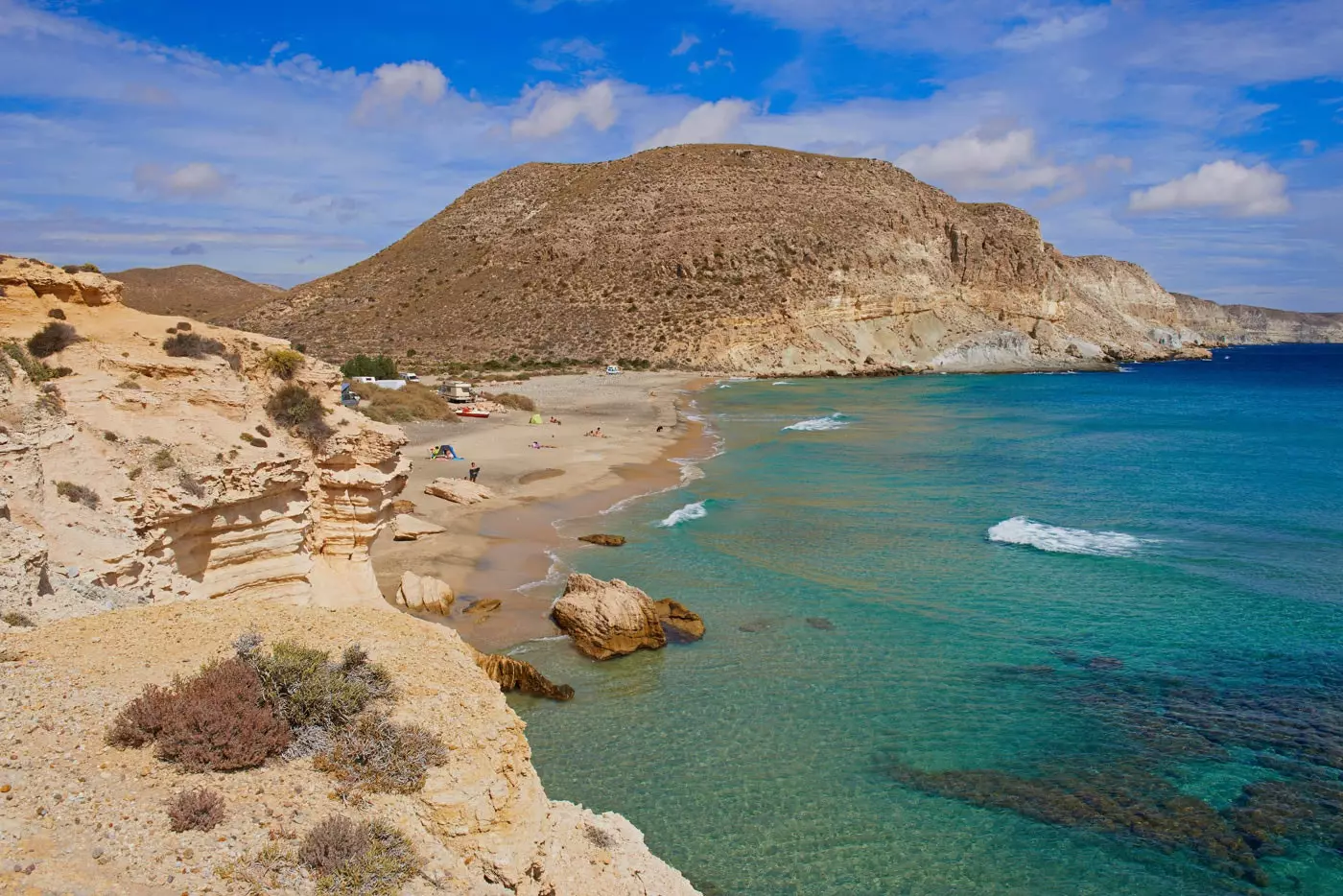
Cala del Plomo (Bitter Water)
Two good places in the natural park to dive in to admire the vast meadows of Posidonia oceanica are the Embarcadero beach (in the Los Escullos area) and above all, Cala Higuera (in San José). In the latter, when heading to the right, fun shallow areas full of narrow corridors, crashes, rock bridges and some underwater caves.
Two other exceptional places to practice snorkeling in Cabo de Gata are the Corralete beach and the Cala del Plomo. In Corralete, located very close to the beautiful silhouette of the Cabo de Gata lighthouse, the quality and water visibility is enviable, being able to observe many rock fish almost from the surface , and even some octopuses hidden among the nooks and crannies.
Lead Cove it is a virgin place which can only be accessed by a dirt track or from the sea. Fitted between two beautiful stone walls, it offers a beautiful diving area on the right side (facing the sea), where the fossil dunes and the rocks have become a place of grip for colorful algae and play area hundreds of fish of different species.
Lastly, in the beach of the dead Both those who love to lie in the sun on a sandbank of overwhelming beauty and those who prefer underwater life will enjoy it. Again, you will have to dive on the right side of the beach.
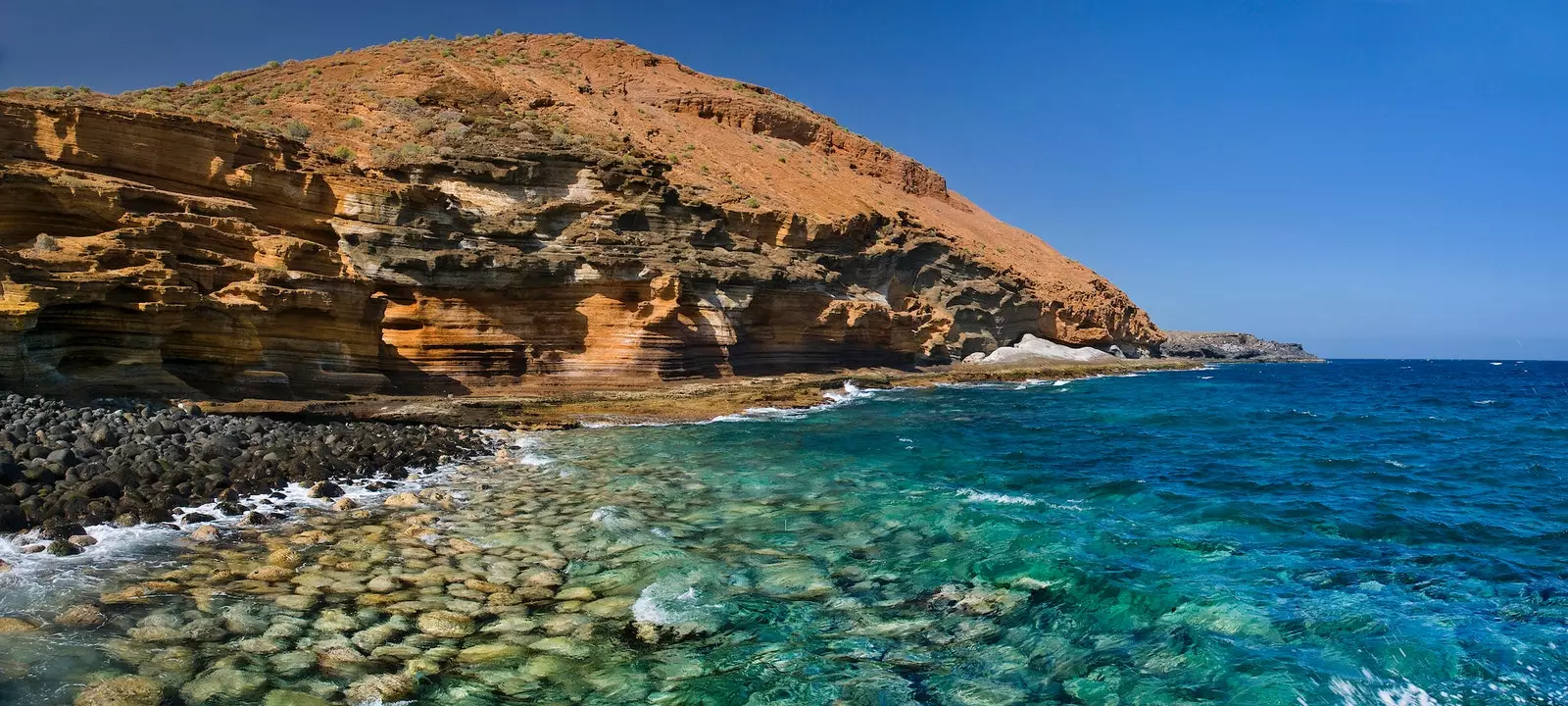
The rocky coast of El Silencio, in the Tenerife municipality of San Miguel de Abona.
TENERIFE ISLAND
The island of Tenerife is famous for the diversity of ecosystems that are in it. beaches of white sand in the south, the incredible volcanic mass of Teide in the center and prehistoric laurel forests, black sand beaches and dramatic cliffs in the north.
As for its waters, they have the great positive point that it is possible to enjoy the year-round snorkeling –both because of the pleasant island climate and because of the great visibility, as there is little plankton– and, in addition, they house a very diverse marine life.
By immersing yourself in the ocean of Tenerife, you can find turtles, sea slugs, octopuses, sea sponges and even sharks (totally harmless). There's also rays, anemones, crabs, starfish, sea urchins and other species typical of temperate and subtropical climates.
The best places to snorkel in Tenerife are yellow mountain , the base of the cliffs of Los Gigantes and Punta de Teno. The first is near the fishing village of Las Galletas. The beach to dive into is rocky, right next to the beautiful Montaña Amarilla.
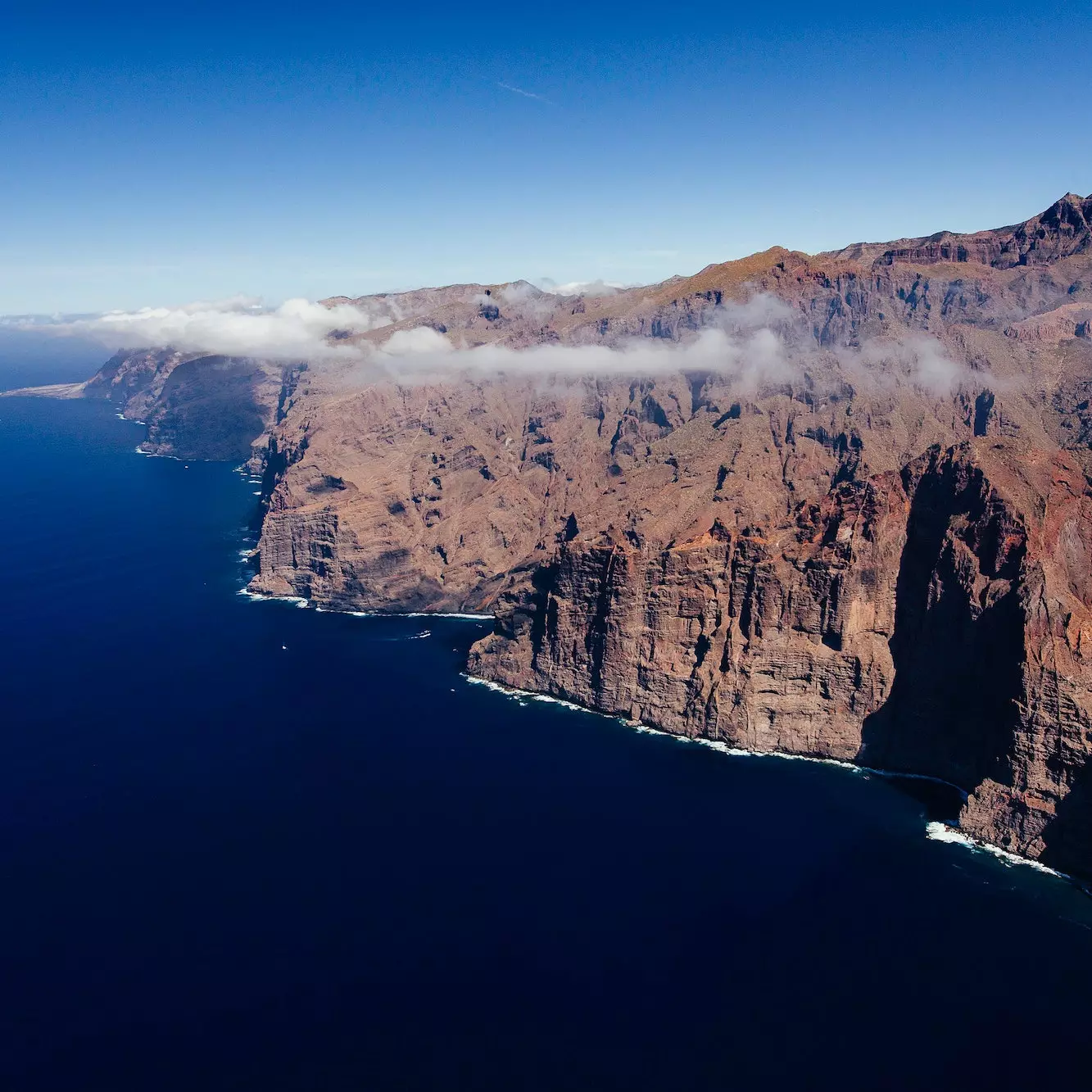
Under the water, the Los Gigantes cliff is even more impressive.
Under the imposing basaltic walls of Los Gigantes –which reach up to 600 meters high– they swim turtles, dolphins and even a small shark. The most fun way to experience this paradise is combining kayak and snorkel.
As to Teno Point , is a beautiful place in the extreme northwest of the island, with lots of rock and very quiet.
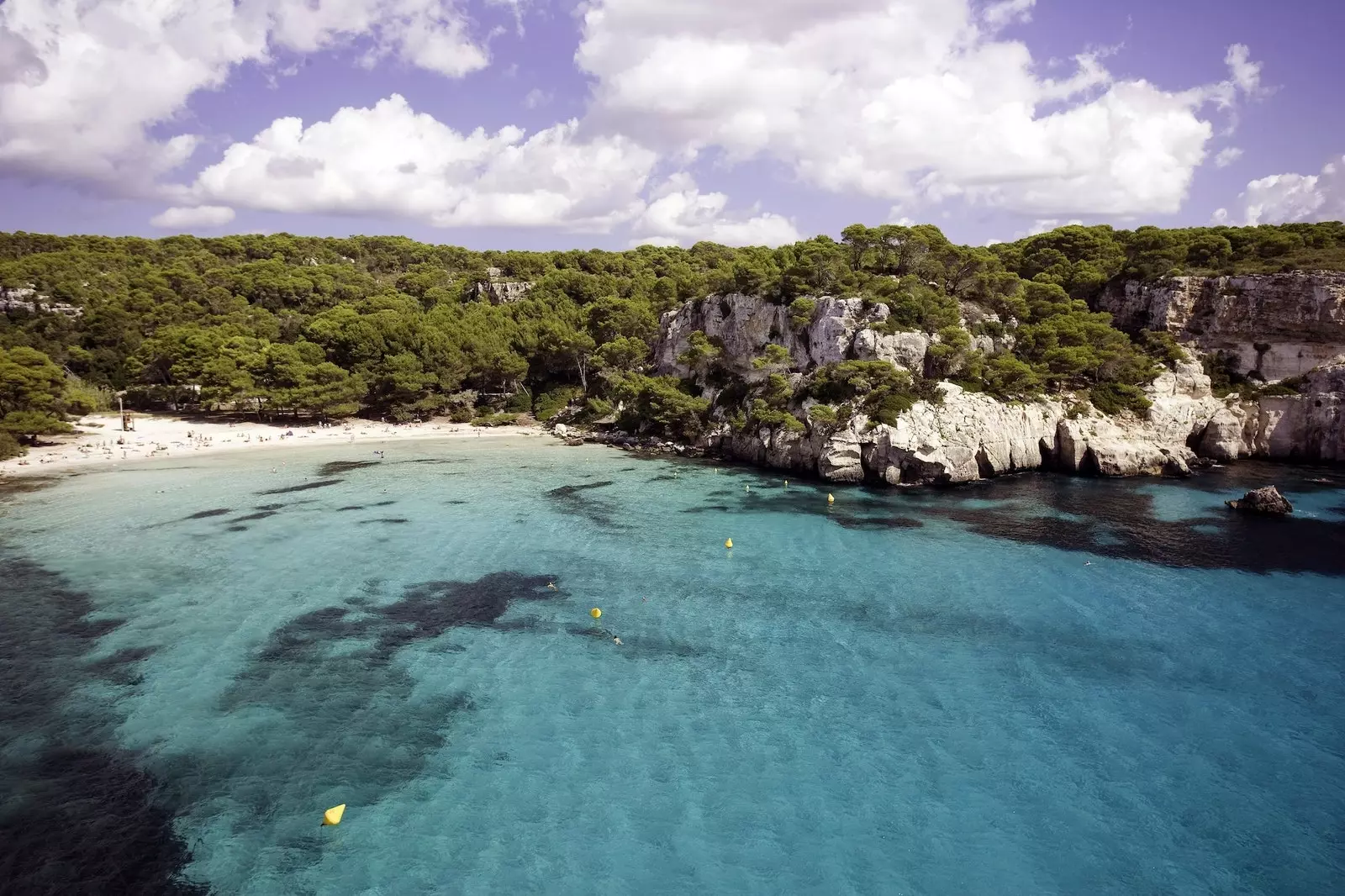
Macarella beach, Minorca
MENORCA ISLAND
Menorca offers some beaches where nature is the main protagonist and the man –especially outside the summer period– is relegated to the background.
Along its coastline it is possible to find waters of a wonderful purity and color, but perhaps the best area of the island to dive with a snorkel and goggles is the part of the North Menorca Marine Reserve, which extends between Cap Gros and Punta des Morter and is considered one of the last virgin areas of the Mediterranean.
Inside the reserve, it is worth diving into Cala Viola de Ponent (Es Mercadal), the beaches of Binimel-là or Escull de Tirant (an islet located behind the Fornells tower).
In the rest of the island, Heat Fund (Sant Lluís), Cala Morell (Ciudadella), Cala Tamarells (Mahón) and the popular Cala Macarella (Ciutadella) are also great options to enjoy the colorful Menorcan marine life.
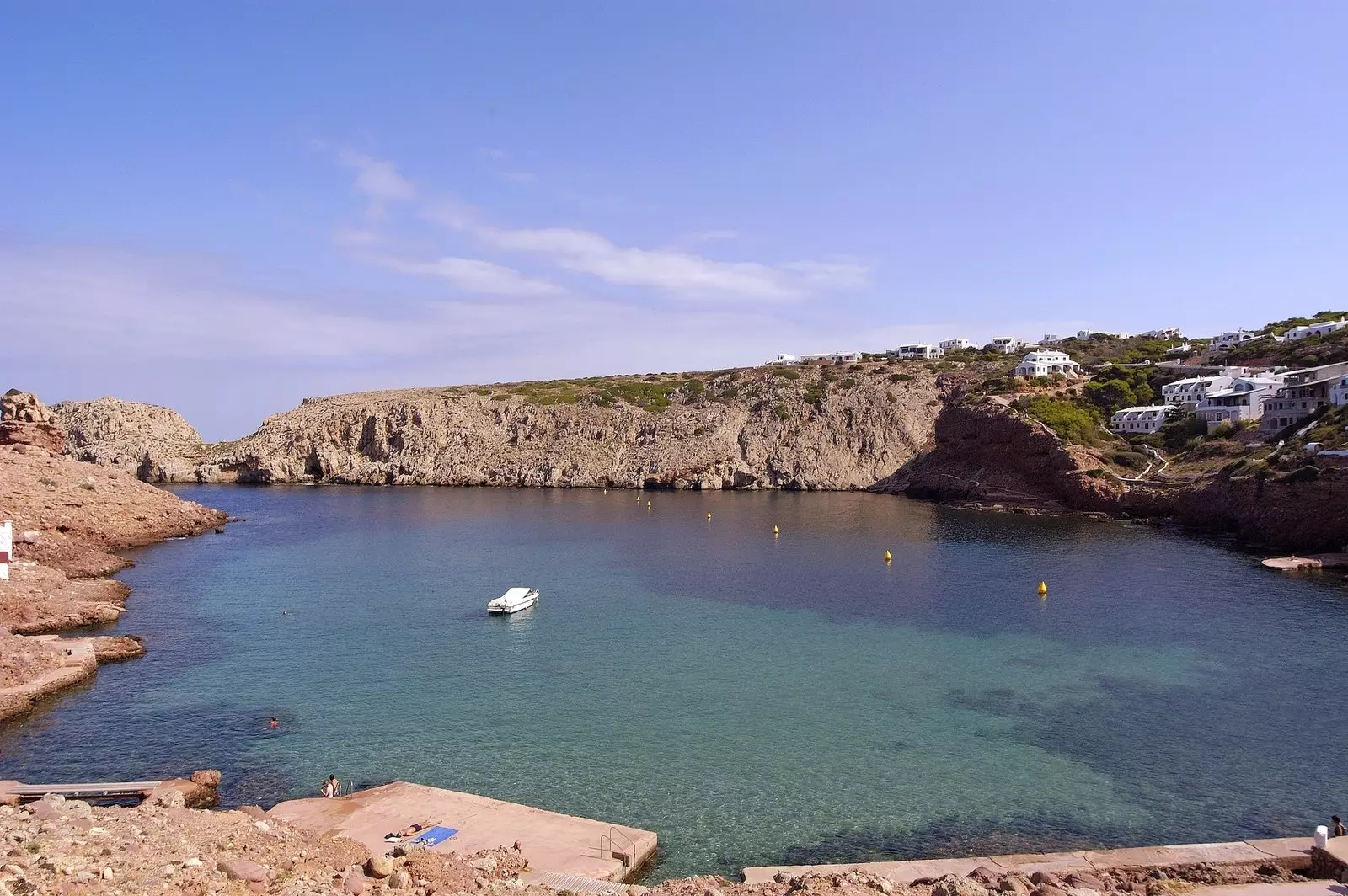
View of Cala Morell, near Ciudadella, in the west of Menorca.
